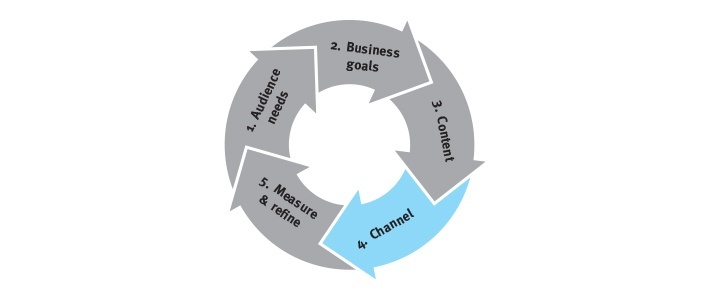Most forward-thinking professional service firms are acutely aware of the need for more quality content. But far fewer have a formal content marketing strategy to help them create it.
This often leads to an urgent desire for a client magazine or research report. Starting here, at the channel, is too late.
Going back to the basics and reviewing what you want, from whom and why may seem obvious enough to go unsaid, but pulling in different directions will have serious implications for the effectiveness of content.
Question everything ...
Begin by looking at your structure, goals and priorities as an outsider would. Question accepted assumptions such as ‘we provide everything that a client might need’. Instead, think about which services you specifically want to provide to that client, and where you might have the edge over the competition.
Your marketing literature might state that you provide a full range of legal services for corporates based in the northwest of England for instance. Your finance director might add that you make 90% of your profits from employment and commercial contracts. And your business development team may argue that you win one out of five tenders for employment work and four out of five tenders for commercial contracts.
A content marketing programme built around the assumptions in your marketing literature would necessarily have to spread itself thinly to cover all services. Yet, structure it around the latter and you could focus on a single topic.
... and everyone
This should naturally lead on to your target audience: your clients and prospects. Client profiles are useful tools for some of the more basic data such as sector, size, geography and job title, but the most useful information comes from interrogating those at the coal face: the client relationship managers.
They will be able to provide insight into the actions that trigger a purchase of your services and highlight the real decision makers and the level of technical detail that will be needed. Are you talking to technical folk with a detailed understanding of what you do? Or an FD more focused on the impact of your services on the bottom line?
The focus of your content will obviously change depending on the audience. And knowledge of how these people consume information will also help to influence your format.
… including yourself
Armed with this knowledge you should then analyse the business development pipeline and prioritise where content can help you the most.
If your problem is not enough prospects coming into the hopper then you may want to focus on blog posts or articles identifying the issues keeping your clients awake at night, and where the kind of solution your firm provides can help. If you have a lot of prospects coming into the pipeline but little success at conversion, you may want to focus on content that differentiates your firm, such as case studies, partner biographies and service descriptions.
Fully exploring business objectives, audience profiles and your business development pipeline should be enough to identify what you want to write about, the type of content you should write, and the business purpose of the content. You can then commence writing in a rational, structured manner.


